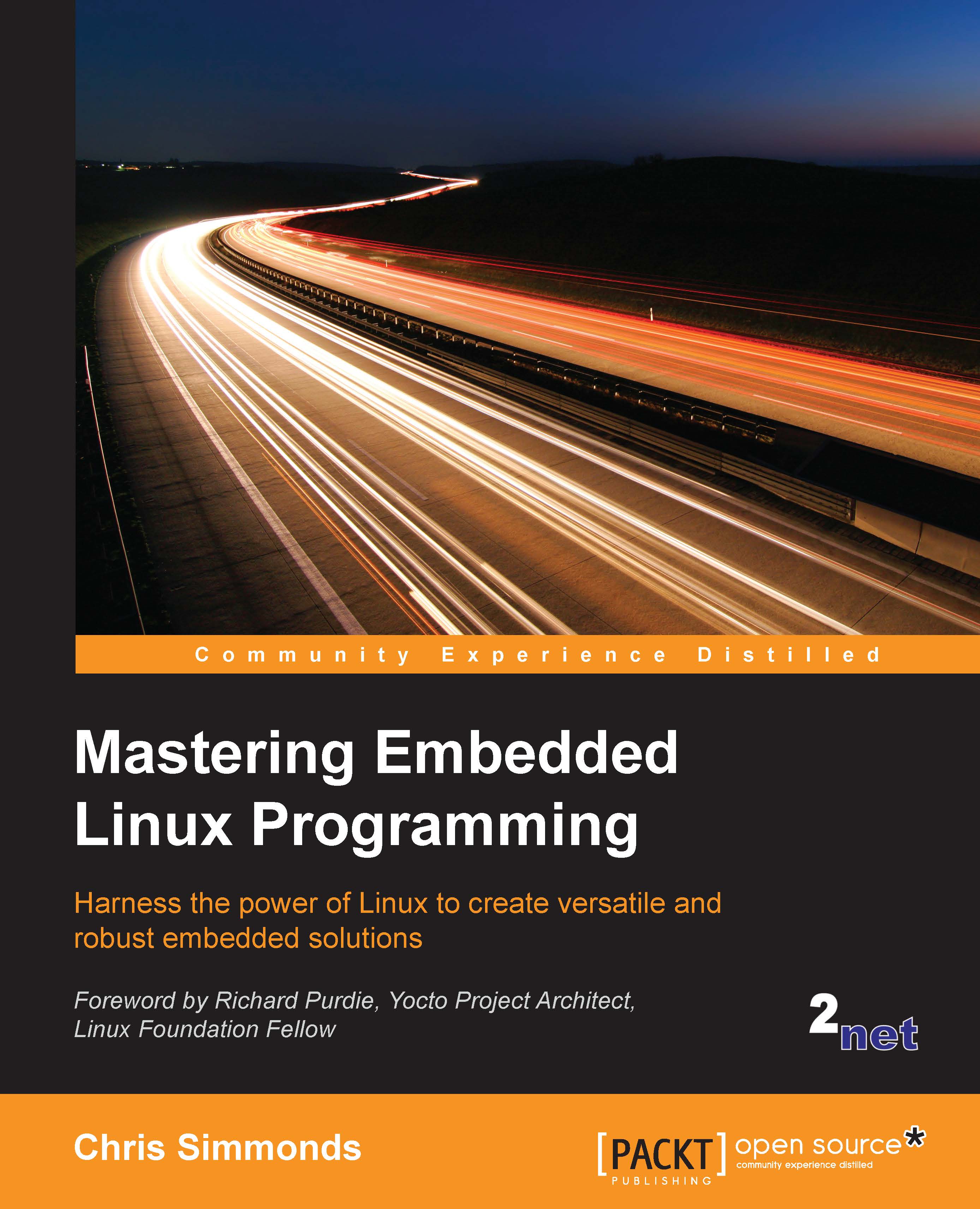You are about to begin working on your next project, and this time it is going to be running Linux. What should you think about before you put finger to keyboard? Let's begin with a high-level look at embedded Linux and see why it is popular, what are the implications of open source licenses, and what kind of hardware you will need to run Linux.
Linux first became a viable choice for embedded devices around 1999. That was when Axis (www.axis.com) released their first Linux-powered network camera and TiVo (www.tivo.com) their first
DVR (Digital Video Recorder). Since 1999, Linux has become ever more popular, to the point that today it is the operating system of choice for many classes of product. At the time of writing, in 2015, there are about two billion devices running Linux. That includes a large number of smartphones running Android, which uses a Linux kernel, and hundreds of millions of set top boxes, smart TVs, and Wi-Fi routers, not to mention a very diverse range of devices such as vehicle diagnostics, weighing scales, industrial devices, and medical monitoring units that ship in smaller volumes.
So, why does your TV run Linux? At first glance, the function of a TV is simple: it has to display a stream of video on a screen. Why is a complex Unix-like operating system like Linux necessary?
The simple answer is Moore's Law: Gordon Moore, co-founder of Intel, observed in 1965 that the density of components on a chip will double about every two years. That applies to the devices that we design and use in our everyday lives just as much as it does to desktops, laptops, and servers. At the heart of most embedded devices is a highly integrated chip that contains one or more processor cores and interfaces with main memory, mass storage, and peripherals of many types. This is referred to as a System on Chip, or SoC, and they are increasing in complexity in accordance with Moore's Law. A typical SoC has a technical reference manual that stretches to thousands of pages. Your TV is not simply displaying a video stream as the old analog sets used to do.
The stream is digital, possibly encrypted, and it needs processing to create an image. Your TV is (or soon will be) connected to the Internet. It can receive content from smartphones, tablets, and home media servers. It can be (or soon will be) used to play games. And so on and so on. You need a full operating system to manage this degree of complexity.
Here are some points that drive the adoption of Linux:
- Linux has the necessary functionality. It has a good scheduler, a good network stack, support for USB, Wi-Fi, Bluetooth, many kinds of storage media, good support for multimedia devices, and so on. It ticks all the boxes.
- Linux has been ported to a wide range of processor architectures, including some that are very commonly found in SoC designs — ARM, MIPS, x86, and PowerPC.
- Linux is open source, so you have the freedom to get the source code and modify it to meet your needs. You, or someone working on your behalf, can create a board support package for your particular SoC board or device. You can add protocols, features, and technologies that may be missing from the mainline source code. You can remove features that you don't need to reduce memory and storage requirements. Linux is flexible.
- Linux has an active community; in the case of the Linux kernel, very active. There is a new release of the kernel every 10 to 12 weeks, and each release contains code from around 1,000 developers. An active community means that Linux is up to date and supports current hardware, protocols, and standards.
- Open source licenses guarantee that you have access to the source code. There is no vendor tie-in.
For these reasons, Linux is an ideal choice for complex devices. But there are a few caveats I should mention here. Complexity makes it harder to understand. Coupled with the fast moving development process and the decentralized structures of open source, you have to put some effort into learning how to use it and to keep on re-learning as it changes. I hope that this book will help in the process.



 Free Chapter
Free Chapter

